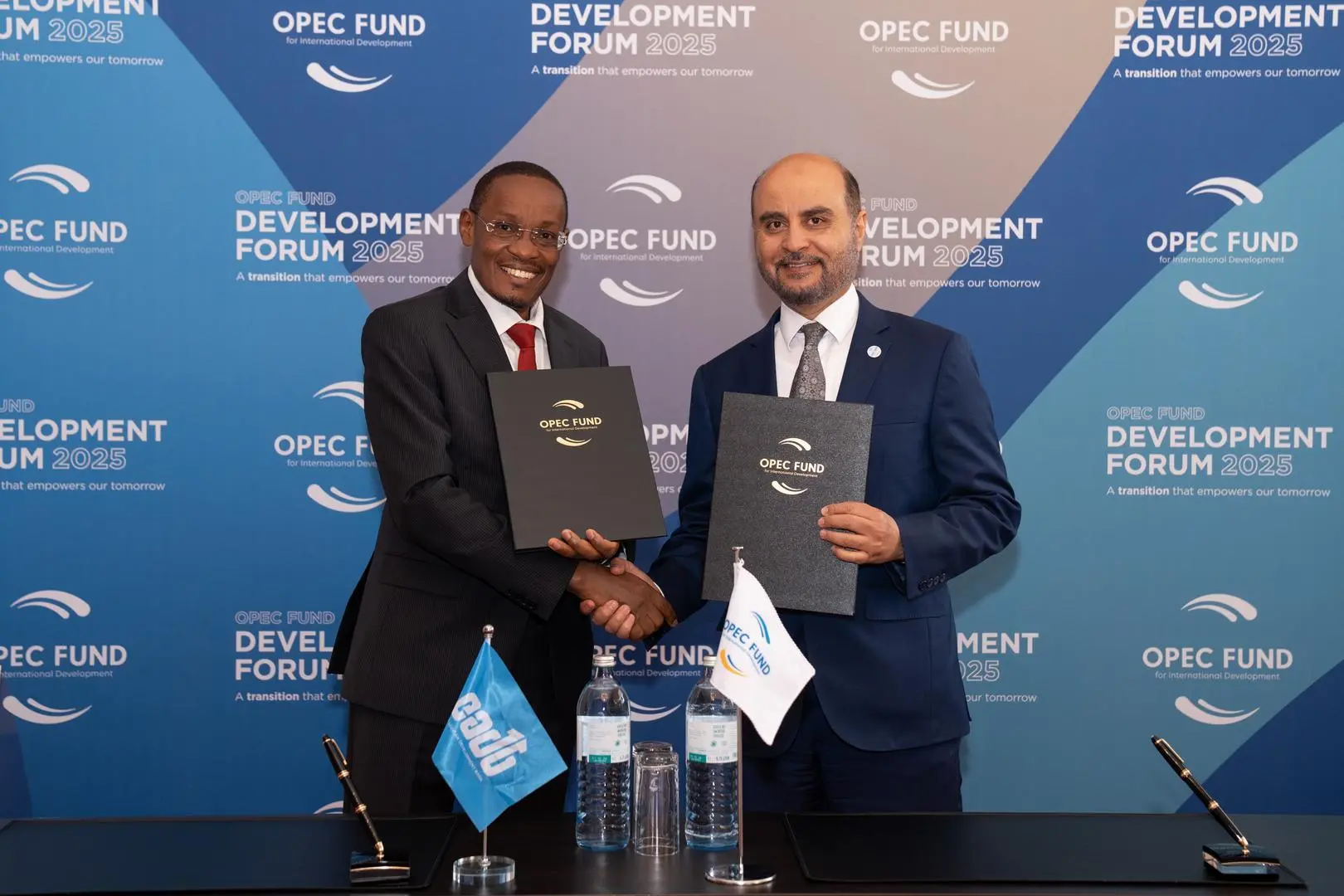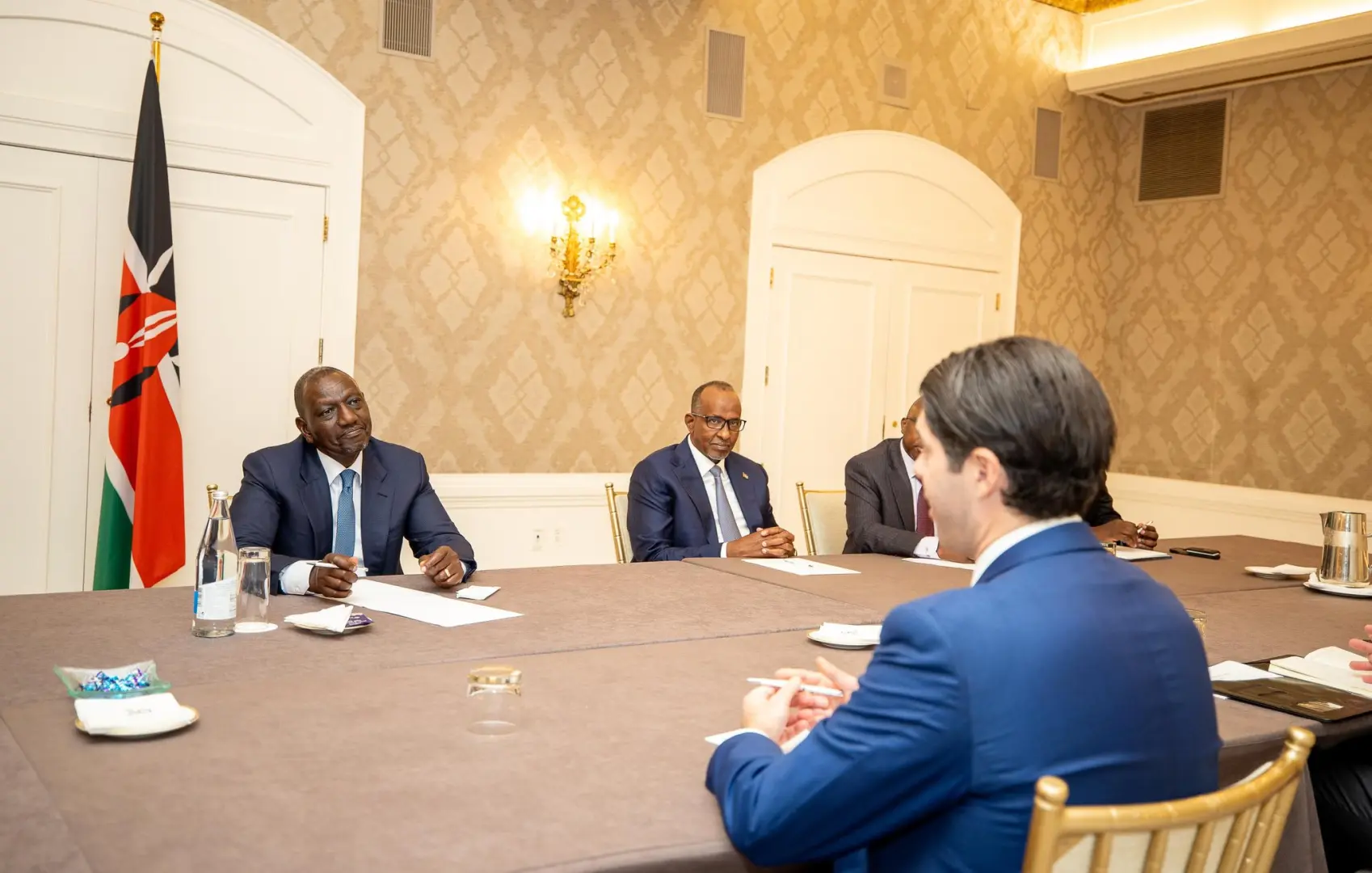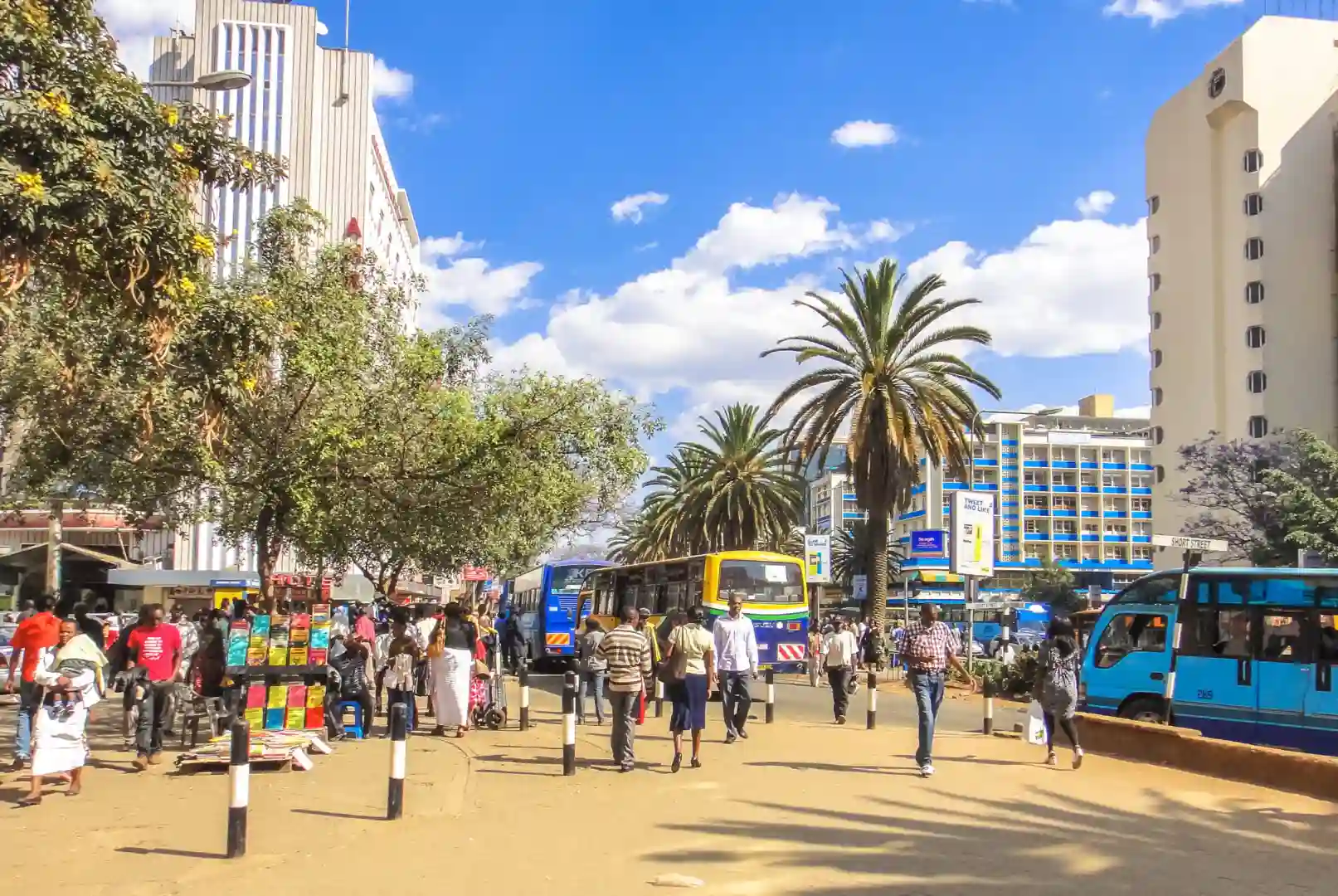In a monumental stride towards fostering robust economic development and sustainable growth across East Africa, the East African Development Bank (EADB) has officially inked its largest single financing agreement to date with the OPEC Fund for International Development. The landmark deal, formalized on Wednesday at the OPEC Fund’s headquarters in Vienna, secures a substantial US$40 million loan designed to significantly accelerate private sector development and critical infrastructure investment within the region.
This latest agreement marks a pivotal fourth collaboration between the two esteemed institutions, elevating their collective financing partnership to an impressive US$85 million since 2002. Such a long-standing and deepening relationship underscores a shared vision for prosperity and a proven track record of impactful development initiatives. Beyond the direct loan, the OPEC Fund has further committed to arranging an additional US$25 million through syndicated resources, a strategic move that positions the EADB to tap into even deeper pools of capital for high-impact projects across its member states.
Bernard Mono, the EADB’s Acting Director General, hailed the agreement as a significant milestone in the bank’s overarching mission to deliver broad-based economic development that directly benefits the people of East Africa. “This partnership exemplifies a powerful commitment to channeling vital resources where they are most needed, driving job creation, innovation, and improved living standards,” Mono stated, emphasizing the transformative potential of the secured funds.
Echoing this sentiment, Dr. Abdulhamid Alkhalifa, President of the OPEC Fund, underscored the strategic importance of this collaboration: “Our partnership with EADB exemplifies our commitment to working with regional financial institutions to achieve sustainable development outcomes. By supporting SMEs and infrastructure in East Africa, we are directly investing in the region’s economic resilience and long-term prosperity.” His remarks highlight the OPEC Fund’s philosophy of leveraging local expertise and institutions to maximize developmental impact.
The Architecture of the Financing: Direct Loan and Syndicated Resources Explained
The core of this financing package is the US$40 million direct loan provided by the OPEC Fund to the EADB. This direct infusion of capital immediately boosts the EADB’s lending capacity, allowing it to provide much-needed financing to a range of projects that align with its developmental mandate. However, the true strategic brilliance of this agreement lies in the additional commitment: the OPEC Fund’s pledge to arrange an additional US$25 million through syndicated resources.
What are Syndicated Resources?
A syndicated loan is a loan offered by a group of lenders (a syndicate) to a single borrower. In this case, the OPEC Fund will act as the lead arranger, coordinating with other financial institutions – potentially commercial banks, other development finance institutions, or institutional investors – to pool an additional US$25 million. This mechanism offers several advantages:
- Risk Diversification: For the lenders, it spreads the risk across multiple parties, making larger loans feasible.
- Increased Capital Mobilization: For the EADB, it allows access to a significantly larger quantum of capital than any single institution might be willing or able to provide alone. This is crucial for financing large-scale infrastructure projects or ambitious SME programs.
- Enhanced Due Diligence: The process often involves rigorous due diligence by multiple lenders, adding an extra layer of scrutiny and credibility to the projects being funded.
- Market Signal: The participation of the OPEC Fund as a lead arranger sends a strong positive signal to the market about the creditworthiness of EADB and the viability of East African projects, potentially attracting future private capital.
This blended approach, combining a direct loan with the facilitation of syndicated resources, is a sophisticated financial strategy that not only provides immediate capital but also opens doors to broader financial markets. It helps the EADB to “mobilize deeper capital pools,” meaning it can access a wider array of investors and larger sums for strategic projects that might otherwise struggle to find adequate financing. This mechanism is increasingly common in development finance, as it allows multilateral institutions to catalyze private sector investment rather than solely providing direct funding.
EADB: A Half-Century Legacy of Development in East Africa
Established in 1967 under the Treaty of East African Cooperation, the East African Development Bank (EADB) has been a cornerstone of economic development in the region for over five decades. Its primary mandate is to promote sustainable economic growth and regional integration within its member states, which currently include Kenya, Uganda, Tanzania, and since 2008, Rwanda. The bank acts as a key financier of long-term regional development, providing a range of financial products and advisory services tailored to the unique needs of East African economies.
EADB’s strategic positioning within the East African Community (EAC) gives it unique insight into the region’s developmental priorities and challenges. Its work focuses on sectors that are critical for broad-based economic upliftment and enhancing regional trade and competitiveness. Over its extensive history, EADB has built an impressive track record of investments across vital sectors:
- Housing: Supporting projects that provide affordable and adequate housing solutions, addressing a critical social and economic need in rapidly urbanizing East African cities. This often involves financing large-scale residential developments or mortgage financing schemes.
- Transportation Corridors: Investing in key infrastructure that facilitates regional trade, connectivity, and logistics. This includes roads, railways, ports, and potentially air travel infrastructure. Improved transport networks reduce costs, enhance efficiency, and open up new markets for goods and services. For example, investments in corridors linking landlocked countries like Uganda and Rwanda to the port of Mombasa in Kenya are vital for trade.
- Agribusiness: Providing financing to the agricultural sector, which forms the backbone of many East African economies. This includes investments in value addition (e.g., food processing, cold storage), modern farming techniques, irrigation, and export-oriented agriculture, thereby enhancing food security, rural incomes, and export earnings.
- Manufacturing: Supporting the industrialization agenda by funding manufacturing enterprises, which contribute to job creation, technology transfer, and economic diversification away from over-reliance on raw material exports.
- Energy: Investing in power generation (renewable and conventional) and transmission projects to address energy deficits, which are a major constraint on industrial growth and everyday life.
- Tourism: Financing projects in the tourism sector, which is a significant foreign exchange earner for several EAC countries. This includes hotels, eco-lodges, and related tourism infrastructure.
The EADB’s ability to provide long-term financing is particularly crucial in a region where commercial banks often prefer shorter-term lending. By offering patient capital, EADB enables projects with longer gestation periods to come to fruition, laying the groundwork for sustainable development.
The OPEC Fund: A Global Catalyst for Development
The OPEC Fund for International Development is a multilateral development finance institution established in 1976 by the member states of the Organization of the Petroleum Exporting Countries (OPEC). Its overarching mission is to foster South-South cooperation and provide financial assistance to non-OPEC developing countries, particularly low-income countries, to support their economic and social development.
Headquartered in Vienna, Austria, the OPEC Fund operates globally, providing financing across various sectors including agriculture, energy, health, education, water, sanitation, and transport. Its funding mechanisms include public sector loans, private sector and trade finance, and grants. The fund typically focuses on projects that are pro-poor, foster sustainable development, and contribute to the achievement of the United Nations Sustainable Development Goals (SDGs).
Dr. Abdulhamid Alkhalifa’s reiteration of the OPEC Fund’s commitment to “working with regional financial institutions” like EADB is a key aspect of their strategy. This approach recognizes that regional banks possess invaluable local knowledge, existing networks, and the capacity to identify and implement projects that are most relevant and impactful at the grassroots level. By channeling funds through such institutions, the OPEC Fund ensures that its investments are aligned with national and regional development priorities and reach a broader beneficiary base. The long-standing nature of the EADB-OPEC Fund partnership, now reaching US$85 million, is a testament to the success and mutual trust built over more than two decades.
Fueling the Engine: The Imperative of SME Development in East Africa
Small and Medium-sized Enterprises (SMEs) are widely recognized as the backbone of most economies, and East Africa is no exception. They are vital drivers of economic growth, job creation, and poverty reduction. In the EAC region, SMEs contribute significantly to GDP and employ a vast majority of the workforce, often over 80% in some countries. They foster innovation, provide essential goods and services, and often operate in sectors that are underserved by larger corporations.
However, despite their critical importance, SMEs in East Africa face numerous challenges that impede their growth and potential:
- Access to Finance: This is arguably the biggest hurdle. Commercial banks often perceive SMEs as high-risk due to lack of collateral, insufficient financial records, and informal operating structures. This leads to limited access to affordable credit, stifling their ability to invest, expand, and innovate. The EADB’s US$40 million loan, specifically targeting private sector development, will directly address this financing gap by allowing EADB to extend loans, guarantees, and other financial instruments to eligible SMEs.
- Infrastructure Deficiencies: Poor roads, unreliable power supply, and limited access to digital connectivity increase operational costs and reduce competitiveness for SMEs.
- Regulatory Burdens: Complex and bureaucratic licensing procedures, high taxes, and unpredictable policy environments can make it difficult for SMEs to formalize and thrive.
- Limited Business Development Services: Many SMEs lack access to training, mentorship, and advisory services that could help them improve management, marketing, and technical skills.
The investment from the OPEC Fund, channeled through EADB, will enable a significant push to empower these vital enterprises. By strengthening SMEs, the EADB and OPEC Fund are “directly investing in the region’s economic resilience.” A robust SME sector creates a diversified economy, less reliant on a few large industries, and more capable of weathering economic shocks. It also fosters a more equitable distribution of wealth and opportunities, which is fundamental for long-term prosperity.
Laying the Foundation: Investing in East Africa’s Critical Infrastructure
Infrastructure is the circulatory system of an economy. Robust and efficient infrastructure is indispensable for sustained economic growth, regional integration, and improved living standards. East Africa, despite its impressive growth trajectory, continues to face a significant infrastructure deficit, which acts as a major bottleneck to its full potential. This deficit spans various critical areas:
- Energy: Many parts of East Africa still lack reliable and affordable access to electricity, hindering industrialization, education, and healthcare. Investments in power generation (hydro, geothermal, solar, wind) and transmission networks are vital.
- Transport: While progress has been made, inter-country road and rail networks remain underdeveloped in many areas, increasing the cost of doing business, limiting trade, and restricting the movement of people. Improving these corridors is key to unlocking regional trade potential under the EAC common market.
- Water and Sanitation: Access to clean water and adequate sanitation remains a challenge for many communities, impacting public health and productivity.
- Digital Connectivity: Expanding broadband internet access is crucial for the digital economy, fostering innovation, and connecting businesses to global markets.
The EADB’s track record in investing in “housing, transportation corridors, and agribusiness” directly addresses these infrastructure needs. The new US$40 million funding will allow the bank to deepen its engagement in these areas and potentially expand into others. For instance, enhanced transportation corridors not only reduce logistical costs for businesses but also facilitate greater regional trade, strengthening the East African Community’s goal of a single market. Investment in energy projects ensures power supply for industries and households, while modern agribusiness infrastructure, like cold storage facilities and processing plants, helps to reduce post-harvest losses and adds value to agricultural produce.
These infrastructure investments have a cascading effect. Better roads mean farmers can get their produce to markets more efficiently. Reliable electricity attracts manufacturers and supports digital services. Improved housing leads to healthier and more productive communities. Ultimately, these foundational investments are critical for the long-term prosperity and competitiveness of the East African region on the global stage.
The Shift Towards Blended Capital Models in Development Finance
OPEC Fund President Abdulhamid Alkhalifa’s emphasis on “blended capital models” highlights a significant evolution in multilateral financing strategies. Traditionally, development finance institutions (DFIs) primarily provided direct loans or grants from their own capital. However, with the increasing scale of development challenges and the growing demand for capital, there’s a clear recognition that public funds alone are insufficient to meet global development needs.
Blended finance refers to the strategic use of development finance and philanthropic funds to mobilize additional commercial financing for sustainable development in developing countries. It typically involves using catalytic public or concessional capital to reduce risks and improve the risk-return profile of investments, thereby attracting private investors who might otherwise be hesitant to enter certain markets or sectors.
In the context of the EADB and OPEC Fund agreement, the US25 million through syndicated resources is an example of blending. The OPEC Fund, with its strong reputation and development mandate, de-risks the additional capital, making it more attractive for other commercial lenders to participate.
The benefits of this shift are manifold:
- Increased Financial Flows: It allows for the mobilization of significantly larger sums of money than traditional aid alone.
- Leveraging Private Sector Expertise: It brings in private sector discipline, efficiency, and innovation.
- Sustainability: It helps to create market-based solutions and reduce reliance on perpetual aid.
- Shared Risk: It spreads the financial risk among multiple partners.
This partnership between EADB and the OPEC Fund exemplifies how development finance is evolving. By combining the strengths of a regional development bank with a global fund that employs modern financing structures, they are setting a precedent for how capital can be deployed efficiently and effectively to achieve sustainable development outcomes in critical regions like East Africa. This approach is aligned with the global consensus that achieving the SDGs by 2030 will require trillions of dollars in investment, much of which must come from private sources, catalyzed by smart public finance.
Economic Resilience and Long-Term Prosperity: A Vision for East Africa
The combined impact of robust SME growth and strategic infrastructure investment, facilitated by this US65millioncommitment(US40 million direct loan + US$25 million syndicated funds), is central to building enduring economic resilience and fostering long-term prosperity in East Africa.
Economic Resilience: This refers to the ability of an economy to withstand and recover from shocks, whether they are global economic downturns, climate-related disasters, or health crises.
- Diversified Economy: A strong SME sector creates a more diversified economic base, reducing over-reliance on a few primary commodities or large industries, thus making the economy less vulnerable to external price shocks.
- Job Security: A thriving private sector, especially SMEs, generates stable employment opportunities, which in turn boosts household incomes and consumer spending, providing a buffer during economic downturns.
- Improved Infrastructure: Resilient infrastructure (e.g., climate-proof roads, diversified energy sources) ensures that essential services and economic activities can continue even in the face of disruptions.
Long-Term Prosperity: This encompasses sustained improvement in living standards, human development, and environmental sustainability.
- Enhanced Productivity: Investments in infrastructure and SME capacity building lead to higher productivity, driving sustained economic growth.
- Poverty Reduction: Job creation, improved access to basic services (through infrastructure), and increased economic opportunities directly contribute to lifting people out of poverty.
- Regional Integration: Stronger infrastructure and a vibrant cross-border SME sector facilitate greater regional trade and integration within the East African Community, creating a larger, more competitive market and fostering peace and stability.
- Human Capital Development: Economic growth supports investments in education and healthcare, leading to a healthier and more skilled workforce, which further fuels prosperity.
- Sustainable Practices: Development finance increasingly emphasizes sustainable practices, ensuring that current economic gains do not compromise future generations’ ability to meet their needs.
This financing agreement is therefore not just about injecting capital; it’s about strategically empowering the fundamental drivers of sustainable development in East Africa. It reflects a profound belief in the region’s potential and a commitment to unlocking that potential through targeted, impactful investments. The partnership between EADB and the OPEC Fund serves as a powerful model for how international cooperation can translate into tangible benefits for millions, paving the way for a more resilient, prosperous, and integrated East African future.
Ready to take your career to the next level? Join our dynamic courses: ACCA, HESI A2, ATI TEAS 7 , HESI EXIT , NCLEX – RN and NCLEX – PN, Financial Literacy!🌟 Dive into a world of opportunities and empower yourself for success. Explore more at Serrari Ed and start your exciting journey today! ✨
Photo source: Google
By: Montel Kamau
Serrari Financial Analyst
20th June, 2025
Article, Financial and News Disclaimer
The Value of a Financial Advisor
While this article offers valuable insights, it is essential to recognize that personal finance can be highly complex and unique to each individual. A financial advisor provides professional expertise and personalized guidance to help you make well-informed decisions tailored to your specific circumstances and goals.
Beyond offering knowledge, a financial advisor serves as a trusted partner to help you stay disciplined, avoid common pitfalls, and remain focused on your long-term objectives. Their perspective and experience can complement your own efforts, enhancing your financial well-being and ensuring a more confident approach to managing your finances.
Disclaimer: This article is for informational purposes only and does not constitute financial advice. Readers are encouraged to consult a licensed financial advisor to obtain guidance specific to their financial situation.
Article and News Disclaimer
The information provided on www.serrarigroup.com is for general informational purposes only. While we strive to keep the information up to date and accurate, we make no representations or warranties of any kind, express or implied, about the completeness, accuracy, reliability, suitability, or availability with respect to the website or the information, products, services, or related graphics contained on the website for any purpose. Any reliance you place on such information is therefore strictly at your own risk.
www.serrarigroup.com is not responsible for any errors or omissions, or for the results obtained from the use of this information. All information on the website is provided on an as-is basis, with no guarantee of completeness, accuracy, timeliness, or of the results obtained from the use of this information, and without warranty of any kind, express or implied, including but not limited to warranties of performance, merchantability, and fitness for a particular purpose.
In no event will www.serrarigroup.com be liable to you or anyone else for any decision made or action taken in reliance on the information provided on the website or for any consequential, special, or similar damages, even if advised of the possibility of such damages.
The articles, news, and information presented on www.serrarigroup.com reflect the opinions of the respective authors and contributors and do not necessarily represent the views of the website or its management. Any views or opinions expressed are solely those of the individual authors and do not represent the website's views or opinions as a whole.
The content on www.serrarigroup.com may include links to external websites, which are provided for convenience and informational purposes only. We have no control over the nature, content, and availability of those sites. The inclusion of any links does not necessarily imply a recommendation or endorsement of the views expressed within them.
Every effort is made to keep the website up and running smoothly. However, www.serrarigroup.com takes no responsibility for, and will not be liable for, the website being temporarily unavailable due to technical issues beyond our control.
Please note that laws, regulations, and information can change rapidly, and we advise you to conduct further research and seek professional advice when necessary.
By using www.serrarigroup.com, you agree to this disclaimer and its terms. If you do not agree with this disclaimer, please do not use the website.
www.serrarigroup.com, reserves the right to update, modify, or remove any part of this disclaimer without prior notice. It is your responsibility to review this disclaimer periodically for changes.
Serrari Group 2025












